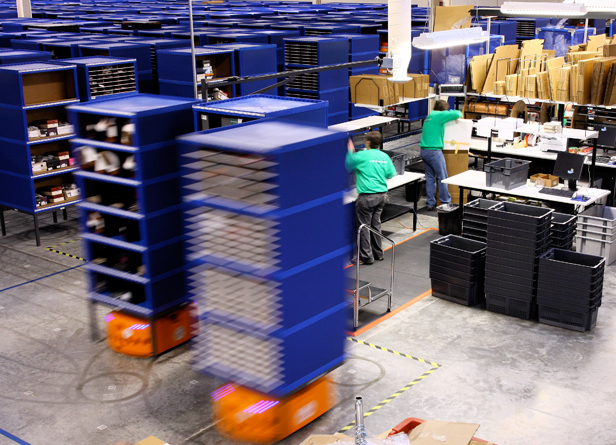Automate or perish
July 9, 2012 | Source: Technology Review

Robots made by Kiva Systems move product shelves on a warehouse floor. Amazon bought the company earlier this year in a step toward automating its distribution system and reducing labor costs (credit: Kiva Systems)
Successful businesses will be those that optimize the mix of humans, robots, and algorithms, says Christopher Steiner in Automate This, a book due out next month.
Today, automated trading bots account for nearly three-quarters of U.S. equity trading by volume. Trading houses plow millions into fiber optics and microwave dishes so their algorithms can send trades a millisecond faster than the next guys’.
This month’s Technology Review business report looks at what it takes to succeed at the cutting edge of automation.
As the MIT economist David Autor has argued, the job market is being “hollowed out.” High-wage, high-skill employment is still being created — and so are many poorly compensated service industry jobs for food preparers, home care aides, and others. It’s the jobs in the middle that are disappearing: certain clerical, sales, and administrative jobs and some on factory floors.
Any work that is repetitive or fairly well structured is open to full or partial automation. Being human confers less and less of an advantage these days.
Some economists believe automation may explain why U.S. economic output has grown since 2007 while the number of jobs has fallen.
Some say what’s taking shape is a more productive symbiosis between man and machine — and successful businesses will be the ones that optimize it. Rodney Brooks, founder of ReThink Robotics in Boston, believes that a new type of general-purpose robot could reinvigorate manufacturing. The machines he’s building aren’t hardwired for any one job; they’re flexible, so many types of businesses could use them for a variety of production tasks.